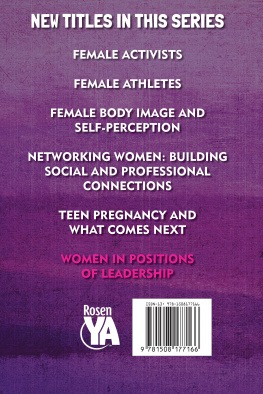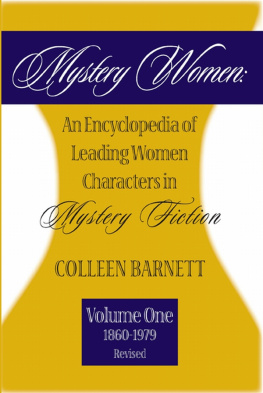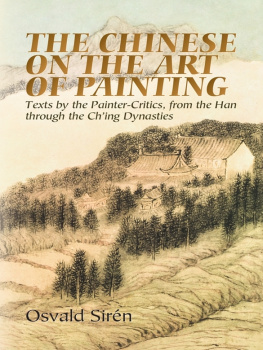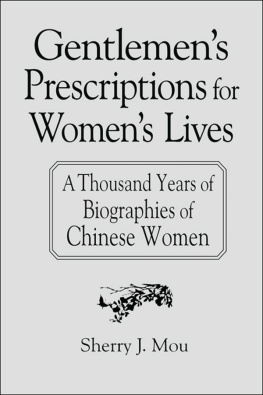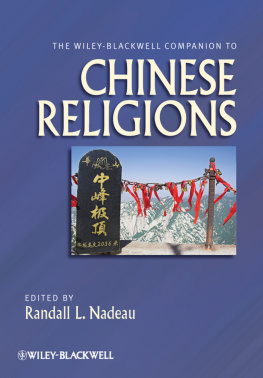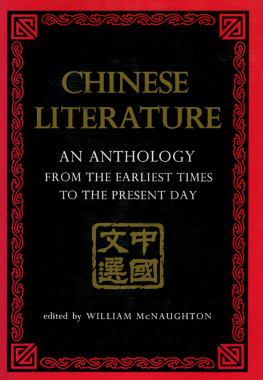An East Gate Book
First published 2014 by M.E. Sharpe
Published 2015 by Routledge
2 Park Square, Milton Park, Abingdon, Oxon OX14 4RN
711 Third Avenue, New York, NY 10017
Routledge is an imprint of the Taylor & Francis Group, an informa business
Copyright 2014 Taylor & Francis. All rights reserved
No part of this book may be reprinted or reproduced or utilised in any form or by any electronic, mechanical, or other means, now known or hereafter invented, including photocopying and recording, or in any information storage or retrieval system, without permission in writing from the publishers.
Notices
No responsibility is assumed by the publisher for any injury and/or damage to persons or property as a matter of products liability, negligence or otherwise, or from any use of operation of any methods, products, instructions or ideas contained in the material herein.
Practitioners and researchers must always rely on their own experience and knowledge in evaluating and using any information, methods, compounds, or experiments described herein. In using such information or methods they should be mindful of their own safety and the safety of others, including parties for whom they have a professional responsibility.
Product or corporate names may be trademarks or registered trademarks, and are used only for identification and explanation without intent to infringe.
Library of Congress Cataloging-in-Publication Data
Biographical dictionary of Chinese women / Lily Xiao Hong Lee and A.D. Stefanowska, editors
p. cm.
An east gate book.
Includes bibliographical references (p. ).
The Qing Period: ISBN: 0-7656-0043-9
The Twentieth Century: ISBN: 0-7656-0798-0
Antiquity Through Sui, 1600 B.C.E.618 C.E.: ISBN: 978-0-7656-1750-7
Tang Through Ming, 6181644: ISBN: 978-0-7656-4314-8
1. WomenChinaBiographyDictionaries. 2. ChinaBiographyDictionaries. I. Lee, Lily Xiao Hong. II. Stefanowska, A.D.
HQ1767.5.A3B56 1998
305.4092251dc21
98-11262
ISBN 13: 9780765643148 (hbk)
This volume is dedicated to
the memory of
Agniezska Dorota Syrokomla-Stefanowska
(19362008)
This, the last volume of the Biographical Dictionary of Chinese Women to be published, is chronologically the second. We have progressed slowly but steadily from the projects beginnings in the then School of Asian Studies at the University of Sydney in Australia in the mid-1980s, producing volume after volume on a first-finished, first-published basis rather than undertaking a chronological journey from the sixteenth century B.C.E. to the year 2000. First to appear, in 1998, was the Qing Period volume (16441911), followed in 2003 by the Twentieth Century volume (19122000), and in 2007 by the Antiquity Through Sui volume (1600 B.C.E.618 C.E.). We are grateful to M.E. Sharpe for allowing us to do it our way.
The purpose of this Biographical Dictionary remains to compile under one title biographies of Chinese women throughout history; to rescue from oblivion as many women as we could uncover information on; and to furnish more complete biographical data on individual Chinese women than presently exists in dictionaries published since the 1940s. With the exception of Empresses and Consorts: Selections from Chen Shous Records of the Three States with Pei Songzhis Commentary (trans. Robert J. Cutter and William G. Crowell, 1999), the vast majority of subjects in English-language biographical dictionaries of eminent Chinese are male. These dictionaries include A Biographical Dictionary of the Qin, Former Han and Xin Periods, 221 B.C.A.D. 24 (Michael Loewe, 2000), Sung Biographies (ed. Herbert Franke, 1976), Dictionary of Ming Biography (13681644) (ed. L. Carrington Goodrich and Chaoying Fang, 1976), Eminent Chinese of the Ching Period (16441912) (ed. Arthur W. Hummel, 1943), Biographical Dictionary of Republican China (ed. Howard L. Boorman and Richard C. Howard, 1967), and Biographic Dictionary of Chinese Communism, 19211965 (ed. Donald W. Klein and Anne B. Clark, 1971). It is our hope that the four volumes of the Biographical Dictionary of Chinese Women will stand alongside these works as an invaluable English-language source of information on the women of China.
As with the previously published three volumes, the articles in this volume were not commissioned as original research but as a summary of existing knowledge and information. While the 1,000-year span of this Tang to Ming volume is half that of the Antiquity to Sui volume, far more material relating to women is available and this is reflected in the greater number and length of biographies. Broadly, these 1,000 years can be divided into four periods coinciding with major dynasties. We were fortunate to be able to enlist as coordinators five Chinese scholars who either wrote articles themselves or invited others to write them: Professor Liu Ning (Tang), Professor Zheng Bijun and Associate Professor Guotong Li (Song), Professor Xu Shiduan (Yuan), and Professor Lin Yanqing (Ming). Wherever possible we augmented articles by including recent Western research in order to complement traditional Chinese sources and provide more context for Western readers. We also invited contributions from Western scholars whose research on the life and work of certain women was known to us.
Two groups of women stand out in this volume. There is a marked increase in the number of women reaching positions of real authority in one way or another. Empress Wu Zetian is famously unique in ruling in her own right as emperor, her achievements comparable with the best examples of her male counterparts in every way. Her contribution to science and technology is unmatched by any Chinese ruler. During the Mongol Yuan dynasty many strong women became de facto rulers, and even in the more conservative Song and Ming dynasties empress dowagers accepted responsibility as rulers as circumstances demanded. Less visible but hardly less impressive were the women who occupied positions in the bureaucracy. Such were the Song sisters of Tang and Liang Hongyu and other non-Han women of Song and Ming who received government appointment and carried out civil and military work.
The second group is the growing number of women artists and writers, especially poets, during this period of increased female literacy and more liberal social attitudes to womens cultural roles. The prominence of literary women in the records is, of course, a reflection of the dominant interest of the male literati in literature, and in poetry in particular; for this we must nevertheless be grateful, for otherwise these women and their work would have been lost beyond retrieval. During Ming especially we perceive signs of women writers networking for the purpose of mutual support and encouragement; more significantly, published collected works and anthologies of womens works appeared. Despite the comparative explosion of material on women during this period, all we could find on some women in the earlier centuries of Tang and Song were one or two poems and extremely sketchy biographies. We agonized over whether to include these little-known poets but eventually decided to do so, sometimes combining them in a single entry, in order to honor them and their works, no matter how ephemeral, rather than lose them forever. Throughout, wherever possible, we have included translations of poems and sometimes prose works so as to let the women speak for themselves. Knowing so little about the lives of Chinese women of the past, particularly those of the Tang and Song periods, we felt their extremely poignant poetry offered a glimpse of how very different womens lives could be in different periods.


